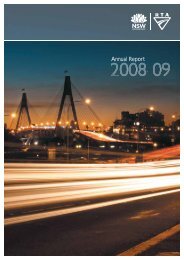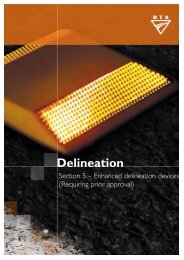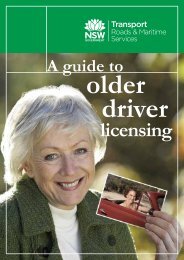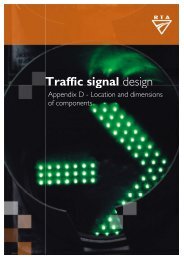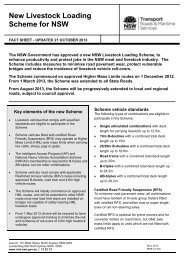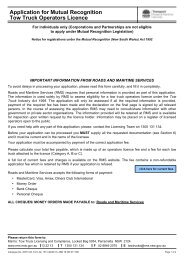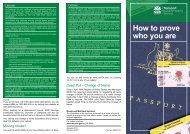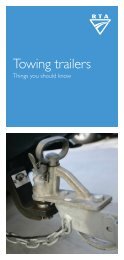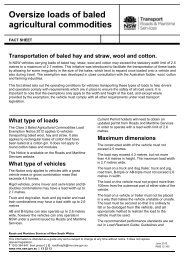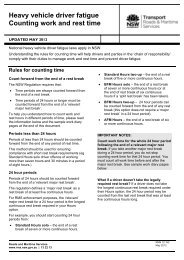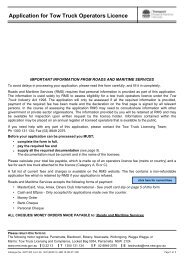Hazard perception handbook - RTA
Hazard perception handbook - RTA
Hazard perception handbook - RTA
Create successful ePaper yourself
Turn your PDF publications into a flip-book with our unique Google optimized e-Paper software.
5<br />
42<br />
All drivers should be looking for gaps that are at least six seconds. This is shown<br />
in the following picture. A six second gap at 60 km/h is the same as a distance of<br />
about 100 metres.<br />
If you don’t have a gap of at least this size in a 60 km/h zone, it would not be safe<br />
to go. In higher speed zones the gap that you will need will be the same in time, but<br />
longer in distance. for example, in an 80 km/h zone where the traffic is travelling at<br />
80 km/h a six second gap equals about 135 metres.<br />
A word of caution. These are guidelines only, not hard and fast rules. you will need<br />
to build your gap selection skills to establish what a safe gap looks like to you when<br />
you are driving.<br />
<strong>Hazard</strong> <strong>perception</strong> <strong>handbook</strong><br />
Be careful of large heavy vehicles displaying a dO NOT OvE<strong>RTA</strong>kE<br />
TURNING vEHICLE sign as they may use more than one lane when<br />
turning left or right. If you put your vehicle in the path of a large turning<br />
vehicle you may be crushed.<br />
If a vehicle displays the dO NOT<br />
OvE<strong>RTA</strong>kE TURNING vEHICLE sign,<br />
you must not pass the vehicle on the side to<br />
which it is turning.<br />
kEy POINTS SUMMARy: SAfE GAPS – TURNING LEfT<br />
• When turning left in a 60 km/h zone you need at least a gap of six<br />
seconds (about 100 metres) between your car and vehicles approaching from<br />
the right.<br />
• If a gap is not large enough, don’t go – you need to wait until it is safe.



